10 Compact Trees That Bring Color to Small Gardens
Small gardens do not have to miss out on the beauty of trees. Compact trees offer a wonderful way to introduce color and texture while keeping your space manageable. With many varieties that bloom or have stunning foliage, these trees add a natural focal point. Their manageable size makes them ideal for urban environments or gardens with limited space.
This post may contain affiliate links, which helps keep this content free. Please read our disclosure for more info.
Acer palmatum (Japanese Maple)

The Japanese maple is celebrated for its elegant foliage, which shifts through shades of green, red, orange or purple depending on variety and season. Many cultivars remain quite small and are suited to tight garden spaces or even large containers. This tree thrives in a spot with morning sun and afternoon shade and benefits from well‑draining soil to avoid root issues. In autumn, the leaves will often glow with vibrant colour, offering one of the most memorable displays for a modest-sized garden.
As the trunk and branch structure mature, the tree gains character that adds winter interest beyond the leaves. It generally grows slowly, which means you can enjoy it without worrying that it will dominate your garden. Pollination and pest care are minimal, provided the soil and light conditions are appropriate. If planted in a sheltered location, it will reward you for many years with subtle changes in appearance.
Amelanchier × grandiflora ‘Ballerina’ (Serviceberry)

This tree offers a multi‑season show with white spring blossoms, small red berries in summer and glowing orange‑purple autumn foliage. The cultivar ‘Ballerina’ remains compact enough for a smaller garden while still delivering dramatic colour. It does best in slightly acidic to neutral soil and full sun to part shade. The berries are a welcome bonus for birds, making it a good choice if you like wildlife‑friendly planting.
The branching form is graceful, and the bark adds subtle texture as the seasons progress. As the leaves turn in autumn, the tree becomes a focal point thanks to rich warm tones which contrast nicely with evergreen plants around it. It tolerates a range of soils if drainage is good and established trees are relatively low‑maintenance. With the right placement, it will bring interest from early spring all the way into late autumn.
Cercis canadensis (Eastern Redbud)
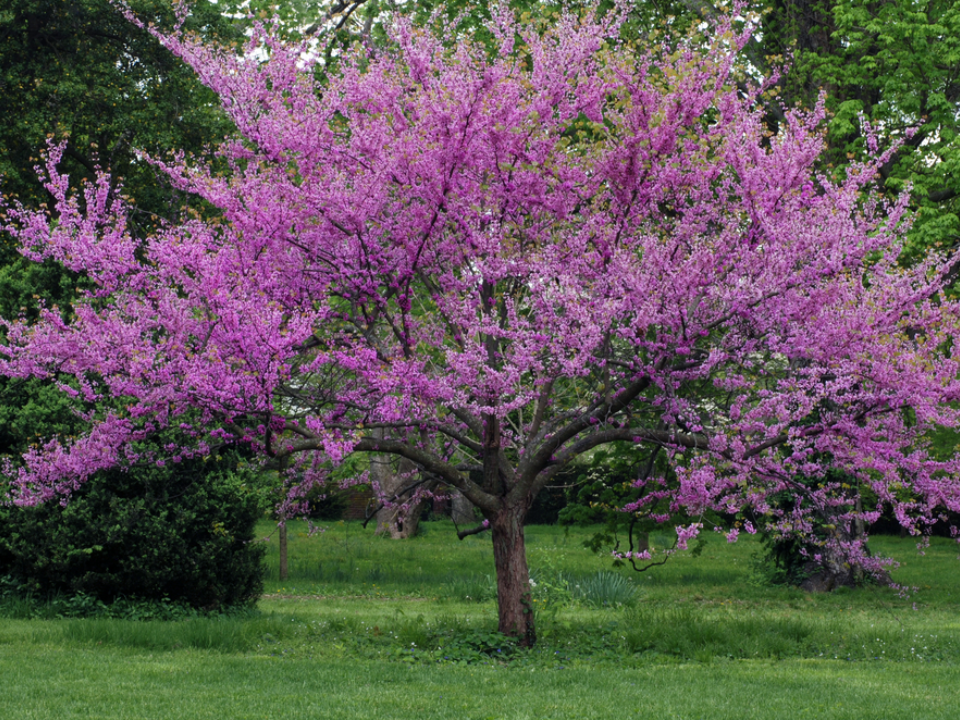
The Eastern Redbud bursts into pink or magenta pea‑shaped flowers in early spring before the leaves appear, making it a wonderful surprise in the garden. Its heart‑shaped leaves emerge and then turn clear yellow in autumn, providing a second colour display. Many varieties stay small enough to fit in a compact garden in the single‑digit metre range. It tolerates part shade, which means you can place it in a spot where larger trees might struggle.
The trunk and branches of the redbud can also have architectural interest in winter when the tree is bare of leaves. It performs best in well‑drained soil and doesn’t demand full sun throughout the day. Birdlife is attracted when the berries appear and there is a light canopy beneath, so lower plantings are possible. If you are looking for a tree with early colour and manageable size, this one is a strong contender.
Acer griseum (Paperbark Maple)
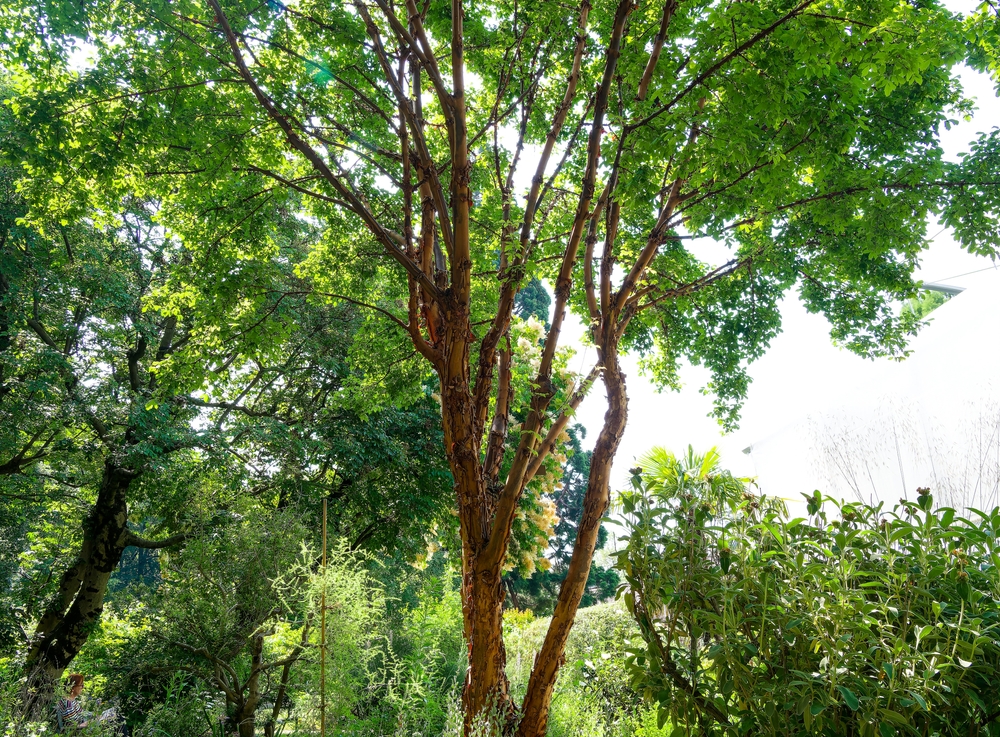
Paperbark Maple is prized for its cinnamon‑coloured peeling bark and its autumn display of coppery‑red foliage. Even though it can grow larger over decades, younger or slower forms are good for small gardens because of their upright habit and modest spread. It prefers full sun to part shade and a well‑drained soil that remains cool and moist in summer. The bark becomes a decorative feature in winter when leaves have dropped.
Many gardeners favour it for the way it changes through seasons since it gives velvet green leaves in summer, then glowing colours in autumn, followed by textured bark in winter. It works well as a specimen tree where you can see it from windows or paths and enjoy the bark close up. It does require some space for the canopy and root spread, so plan accordingly, even though it is smaller than many maples. If you value interest across all seasons, this tree is worth considering.
Parrotia persica ‘Persian Spire’ (Persian Ironwood)

Persian Spire is a narrow cultivar of ironwood suited for a small garden thanks to its upright habit and rich seasonal changes. In spring, new leaves may emerge edged with purple, turning mid‑green in summer and then shifting to red, orange, and yellow in autumn. It tolerates full sun and a range of soils, provided drainage is adequate. The bark has mottled tones, which add subtle texture once the leaves have gone.
Its upright form means it occupies less horizontal space but still gives height and colour impact. Flowering is modest, but the vivid autumn foliage is the star of the show. With a widespread root habit, you should give it enough soil area to grow without competition from close-pading plants. This tree is a good choice when you want vertical colour in a petite garden.
Magnolia liliiflora (Lily Magnolia)
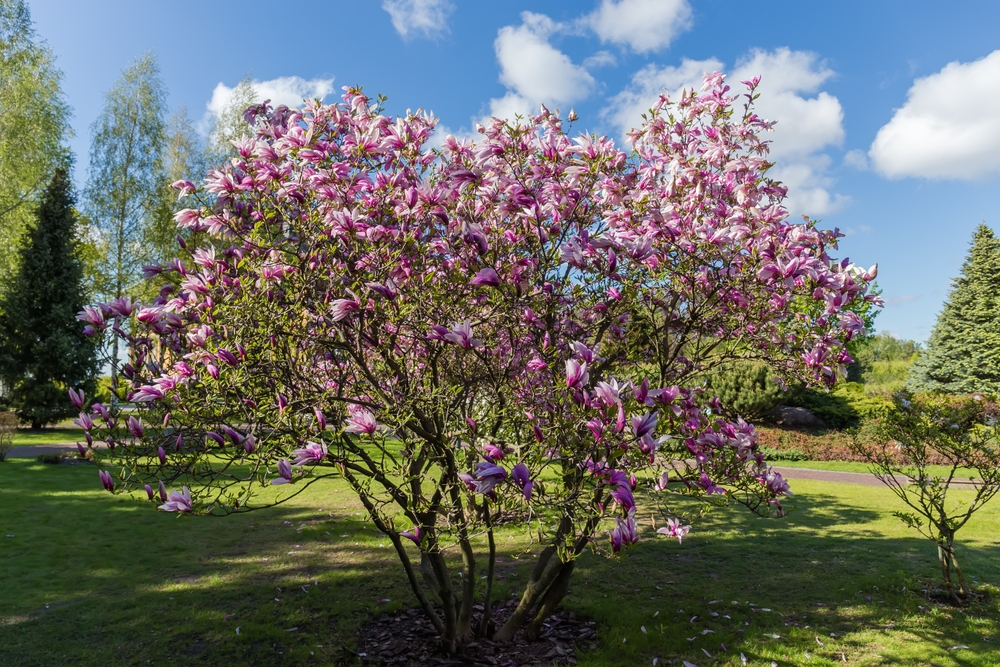
The Lily Magnolia is a small tree that reaches around 4 m tall and produces large pink‑purple blooms in early spring before the leaves open. Its compact size and slow growth make it well suited to gardens of modest size. It prefers acidic to neutral soil with good moisture and a location with protection from cold late frosts. Once its flowers fade, the fresh green leaves remain attractive, and the shape holds its own through summer.
Because the branches are fairly delicate, you should avoid planting in very exposed positions where wind may damage the blooms. A mulch layer will help retain moisture around the root zone and prevent stress during dry spells. It brings early colour when many other trees are still bare, which adds value in a small garden. With its manageable size, you can enjoy dramatic spring flowers without the footprint of a large tree.
Laburnum × watereri ‘Vossii’ (Golden Chain Tree)
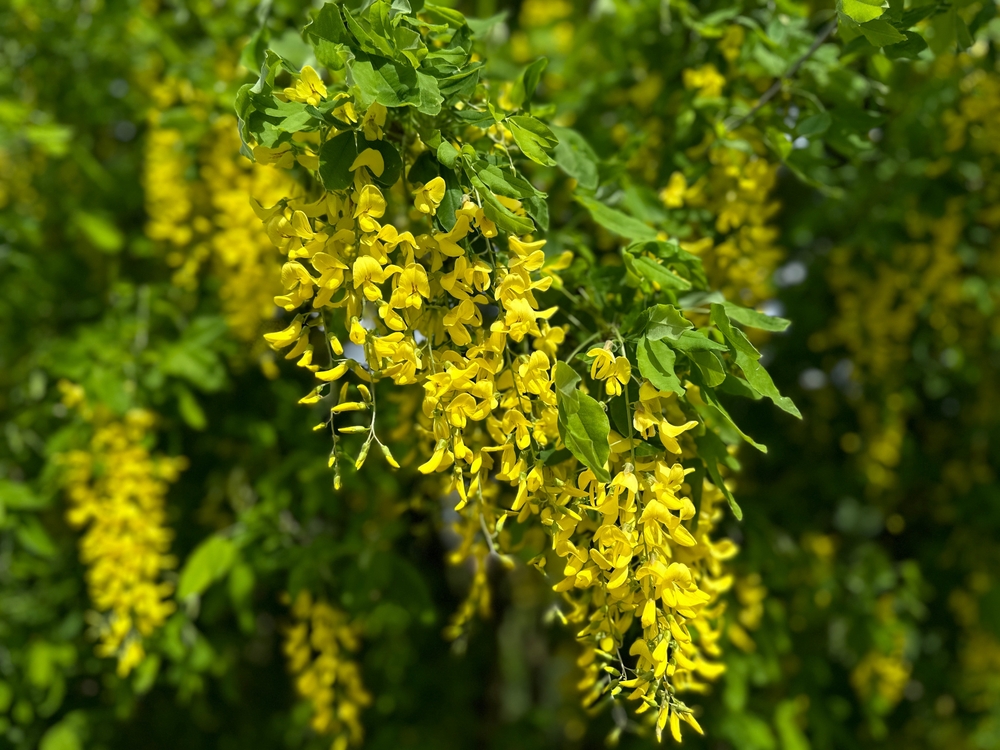
The Golden Chain Tree is known for its long drooping chains of yellow pea‑shaped flowers in late spring, which offer a memorable display. In a small garden, you can use it as a solitary specimen or train it against a wall to limit its spread. It grows best in full sun or light shade and prefers well‑draining soil that is not waterlogged. After flowering, the legume‑like pods add interest, though these can persist into autumn.
Though the tree offers spectacular blooms, it is worth remembering that all parts are toxic, so placement away from play areas is wise. Its size remains moderate enough for a small garden if you choose the right cultivar and maintain its shape. The bark and branch form present pleasing geometry once the flowers finish. If your aim is a short‑lived but high‑impact spring display, this tree delivers.
Cornus kousa (Kousa Dogwood)
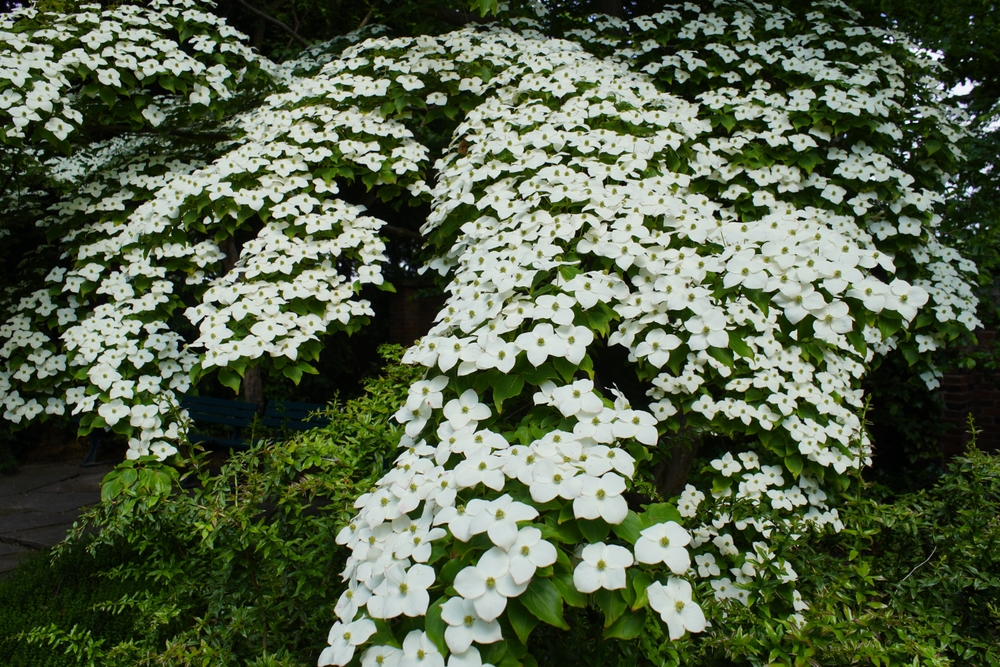
Kousa Dogwood is a compact tree that bears showy white or pink bracts in late spring and attractive fruit and foliage through summer and autumn. Its shape is often neat and manageable, making it a good match for smaller garden plots. It prefers full sun to part shade and well‑draining, slightly acidic soils. The fruit is red and berry‑like, attractive to birds, and the leaves often turn reddish shades before leaf fall.
It benefits from some shelter from the hot afternoon sun so that the leaf colour remains vivid. In winter, the branching form can add structure when the tree is bare. Plant it where you can view the flowers and fruit at eye level for maximum enjoyment. This is a tree that gives layered interest across seasons without requiring a wide footprint.
Amelanchier lamarckii (Snowy Mespilus – smaller form)

Snowy Mespilus fits smaller gardens thanks to its modest height and generous bloom of white star‑shaped flowers in spring. After flowering, the small orange fruit appears, then the foliage glows in shades of red and purple in autumn. It tolerates sun or partial shade and is relatively adaptable to different soils, provided roots have room. It makes a fine specimen in a corner or near a path where the seasonal changes can be appreciated.
Because it is a multi‑stem tree form, it often has a lighter canopy that allows ground plants underneath. This opens planting possibilities beneath it for shade‑tolerant perennials. The bark and branch form remain interesting late into winter. If you want a compact tree that cycles through four seasons of interest, this one is well suited.
Pittosporum tenuifolium (Silverleaf Kōhūhū – small tree form)
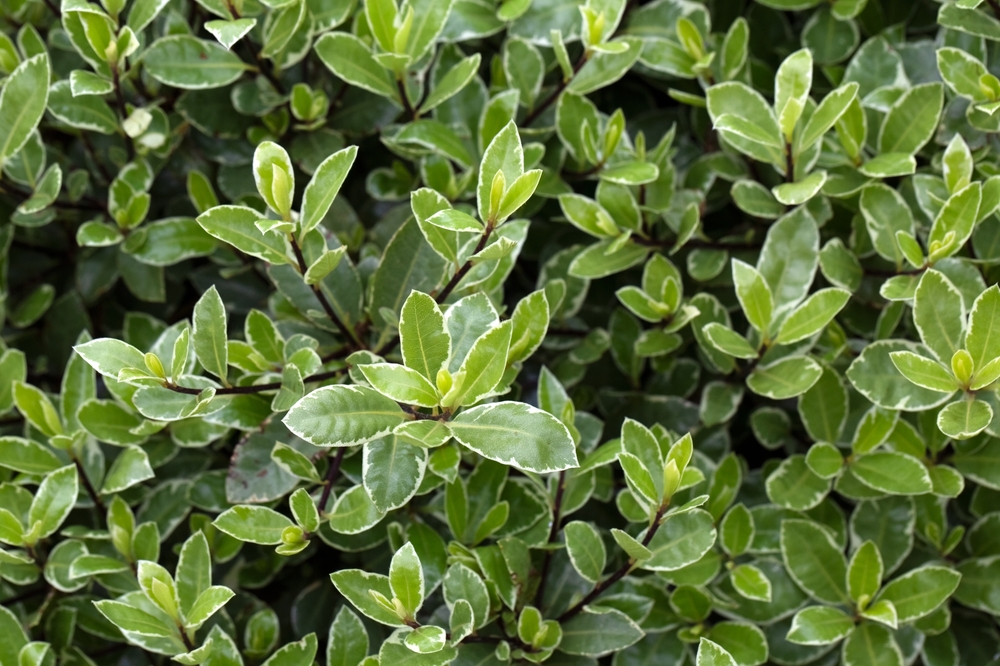
While typically smaller than many trees, this evergreen small‑tree form of Kōhūhū remains neat and offers coloured foliage through the year. The leaves in some cultivars take on silvery or bronze tinges, and young stems may show dark purplish hues under the right light. It works well in full sun to part shade and tolerates some dry conditions once established. Because it remains relatively compact and has evergreen interest, it fills a different niche than deciduous trees in a small garden.
The trunk and branches of the tree are slender, which means you can pair it with lower shrub layers without overwhelming them. The coloured foliage helps provide contrast when other plants are green and can act as a backdrop for seasonal flowers. It remains in foliage year-round, so the shape is more constant and provides structure when other trees have dropped their leaves. If you want colour and interest even in winter, this will support that aim.
This article originally appeared on Avocadu.
